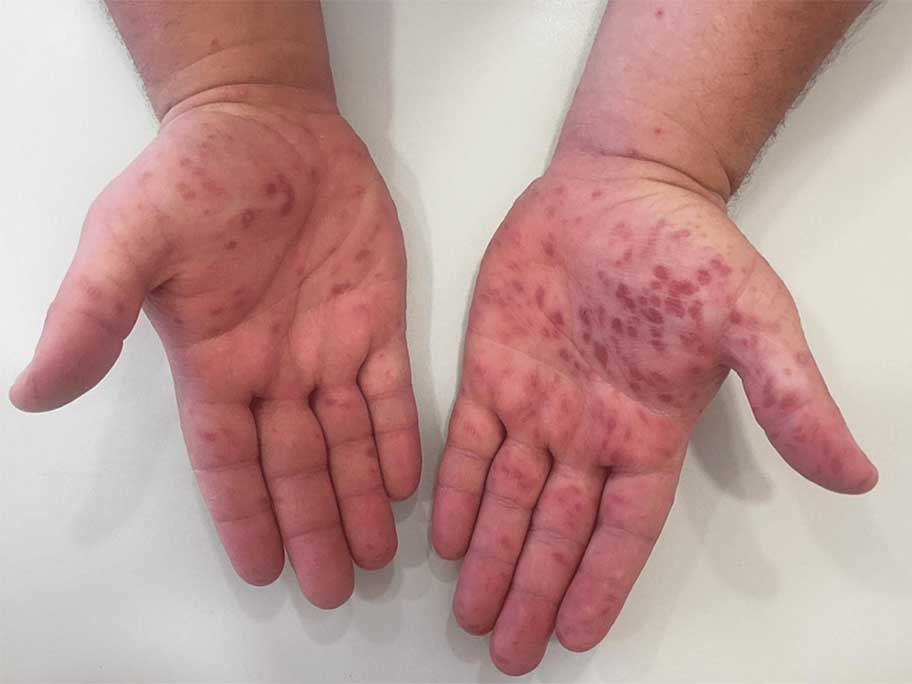
Mike is a 40-year-old office worker who presents with mild fever, general malaise, sore throat and tongue discomfort for three days.
This is associated with a non-pruritic palmar and plantar rash (pictured).
Mike has been in a long-term monogamous heterosexual relationship for 10 years and had chickenpox as a child.
He has no recent history of overseas travel.
His partner is well, but their fully immunised five-year-old daughter was ill with a fever, mild diarrhoea, and oral ulcers last week.
On examination, Mike’s temperature is 38.7°C with otherwise normal vital signs.
The rash is largely macular, with a few vesicles, and there are numerous vesicular lesions on the soft palate and lower lip, and multiple shallow ulcers on the tongue.
There is no associated lymphadenopathy.
What is the most likely diagnosis?
Correct!
While most cases of hand, foot and mouth disease (HFMD) occur in infants and children, sporadic cases and epidemics principally affecting older children and adults are documented, and adult cases have increasingly been described in the past decade.
Multiple enterovirus serotypes can cause HFMD, with coxsackievirus A being the most common.
Many adult cases present typically with a febrile illness and vesicular eruption on the hands, feet and oral mucosa.
Subsequent desquamation of the palms and soles is common. Atypical cases are also reported in adults, presenting with pseudo-purpuric lesions, affecting other ‘non-typical’ areas such as the scalp, face, limbs and trunk.
Fever and malaise may be prominent, and strawberry tongue has been reported as the key oral manifestation in some. Severe CNS and cardiac manifestations in immunocompetent adults have also been reported.
The diagnosis is typically clinical, but when the clinical clues are unclear or atypical, samples for cultures or nucleic acid amplification from the throat, stool and vesicular fluid may aid diagnosis.
Treatment is supportive and symptomatic, with preventive measures to contain the risk of spread.
Mpox is less likely in this case, given the lack of risk exposure, the absence of umbilication of skin lesions, and the lack of anogenital or perioral lesions.
The rash of secondary syphilis is more likely to be associated with sexual risk factors, be diffuse and involve the trunk, and is associated with lymphadenopathy.
The childhood history of varicella and distribution and non-pruritic nature of the rash makes chickenpox less likely.
In this case, review of the recent family history revealed that Mike’s partner had noted a few small macular spots on her daughter’s hands and feet during her illness, but did not think of HMFD because these were not vesicular.
